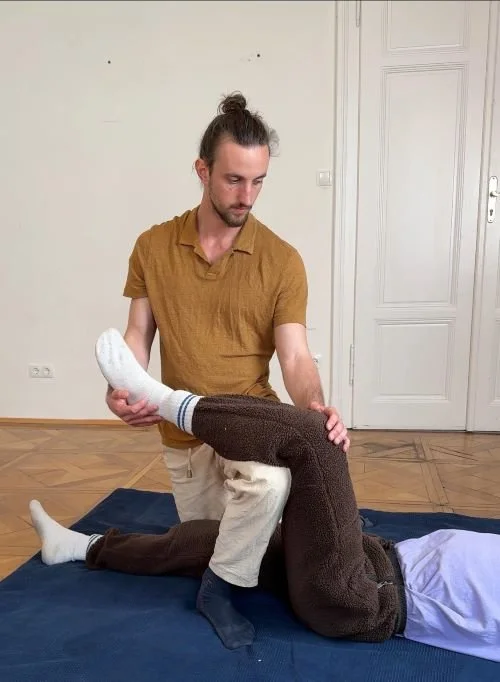Integrative Structural Adjustment
Precision manual correction of spine, hips & joints, anchored through mindful energetic integration.
Restore mobility, ease pain, and realign your structure. This session blends osteopathic and chiropractic-inspired adjustments with energetic integration for lasting balance.
This session offers precise manual therapy to correct physical misalignments in the spine, hips, shoulders, and joints. Drawing on osteopathic and chiropractic techniques, each adjustment is performed with sensitivity and anatomical accuracy to release structural tension.
Beyond physical corrections, this modality includes energetic integration. Recognizing that emotional and mental patterns can create or reinforce misalignments, each adjustment is anchored into your deeper energetic system, ensuring sustainable change across body, mind, and spirit.
Process Overview
-

Postural & energetic assessment using intuitive and manual diagnostics
-

Manual release work on fascia and soft tissue
-

Targeted adjustments to joints, spine, hips, neck
-

Energetic integration to support structural shift
-

Grounding, integration guidance, and aftercare suggestions
Symptoms Checklist
Postural imbalance or pelvic tilt
Chronic lower back, neck, or hip pain
Persistent tension with an energetic/emotional component
Reduced spinal mobility or stiffness
Vertebral "blocks" or misalignment
Feeling physically misaligned or “off-centre”
Alexander Ahamer, skilled in manual structural adjustments, osteopathic-inspired bodywork, and energy-based integration, brings clinical understanding and intuitive presence to help clients find both physical alignment and deep internal balance.
Learn more at About
Testimonials
FAQs
-
It includes joint and spinal adjustments similar to chiropractic, but always done gently, within your comfort, and without forceful manipulation.
-
It should be comfortable, some areas may feel temporarily sensitive, but each move is applied with care.
-
Structural imbalances in the body often arise from deeper mental or energetic patterns. An irritated or restless mind creates tension in the body - muscles contract, pulling bones and vertebrae out of alignment.
Meridians, the subtle energy channels mapped in Traditional Chinese Medicine, reflect these inner states. They correspond to specific mental-emotional qualities and it's possible to assess their energetic condition with precision.
By integrating structural correction into the body’s energetic system, we ensure that the change is not just mechanical, but also anchored in the subtle dimensions of body and mind. This approach allows for deeper, more sustainable transformation — one that resonates through posture, energy, and consciousness.
-
Yes. This mode can be incorporated into the full 90-minute combination (Shiatsu & Energetic Healing + Structural Adjustment).
Schedule Your Structural Shift
Physical adjustments address alignment and joint mobility, energetic integration ensures these shifts hold over time by re-patterning underlying tension. When structure aligns with energy, the body operates more fluidly and sustainably, supporting lasting physical comfort and mental clarity.
Address & Hours
Now accepting clients in Cascais at:
R. Dom Francisco de Avilez 26 cave, 2750-349
(Parking available nearby)
Opening hours:
Monday & Thursday : 13:30 – 18:00
Additional times by appointment.





